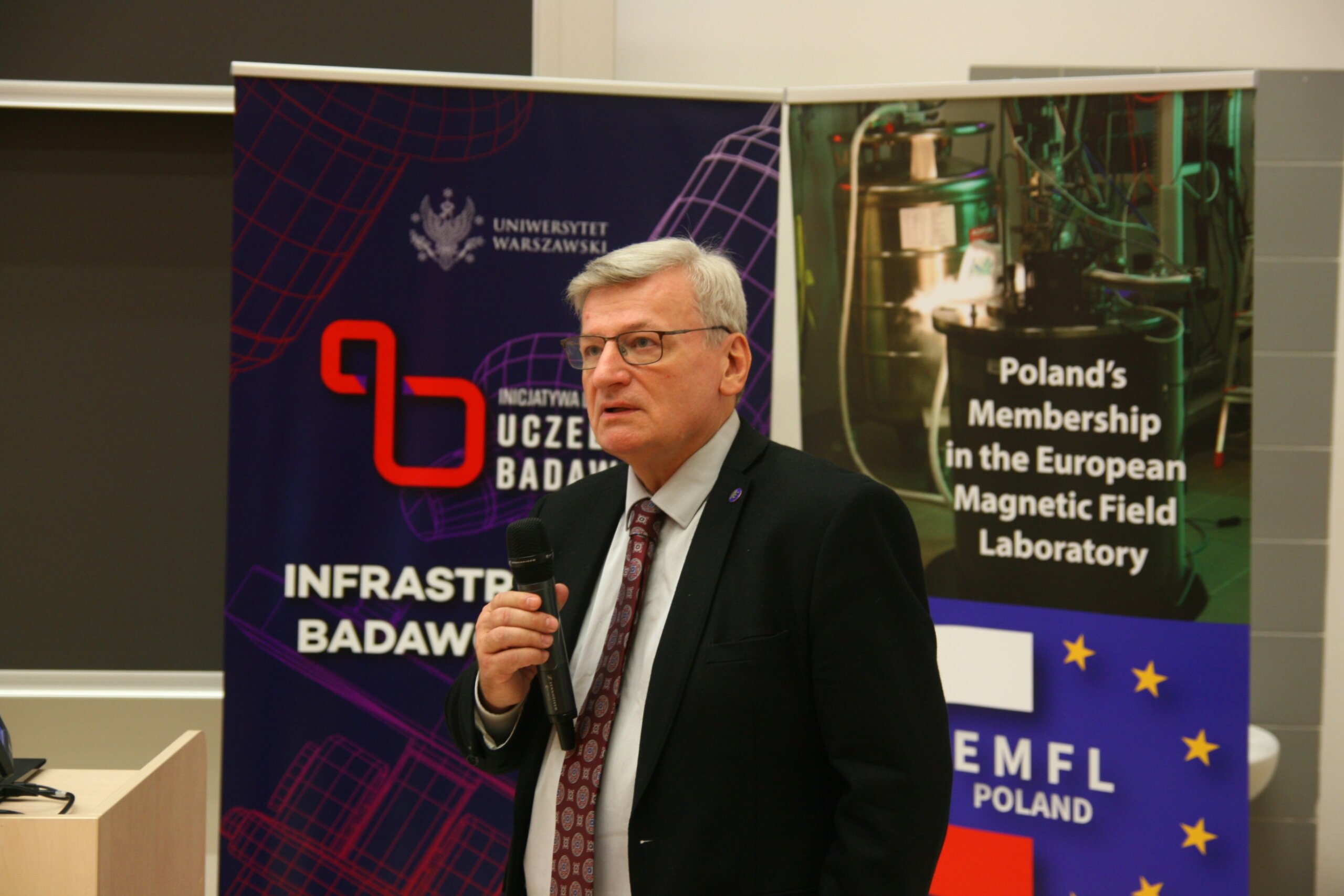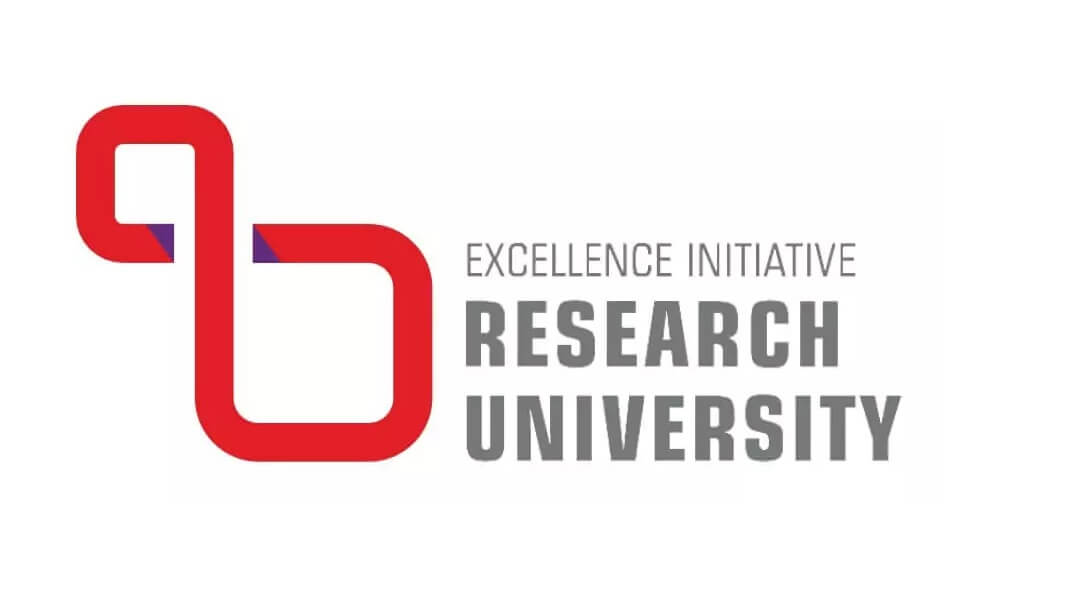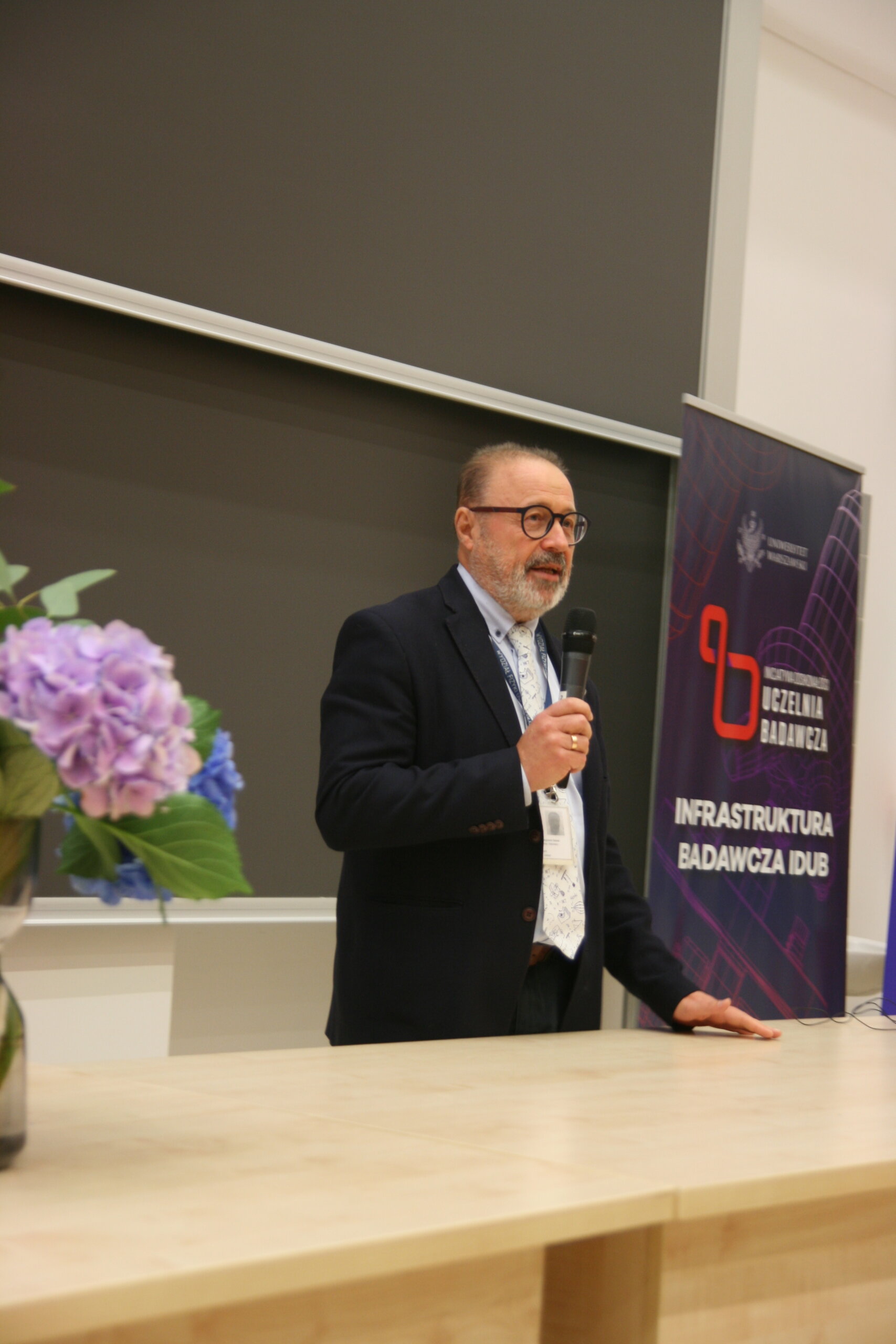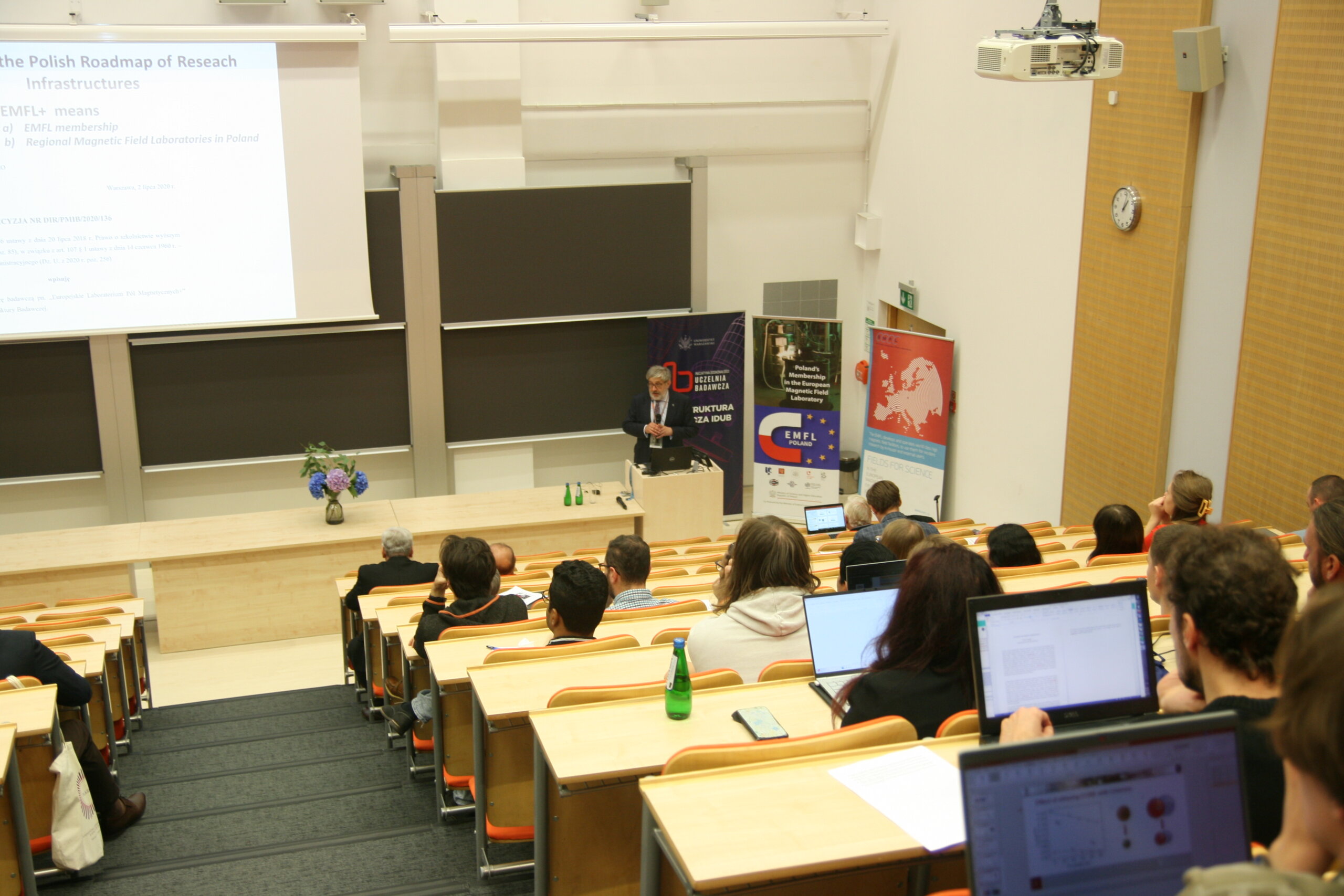Polish Contribution to European Cooperation: Helium Infrastructure and Materials Research at the University of Warsaw

09 10 2025
Category: Conferences, Events, IDUB research infrastructure, Physics
The use of magnetic fields is an indispensable element of modern materials research. For several decades, researchers at the University of Warsaw have been actively employing them to uncover new properties of materials and semiconductor structures. Currently, the greatest attention is focused on optical measurements of semiconductor nanostructures and two-dimensional materials. These typically require both low temperatures and strong magnetic fields.
Liquid helium and sustainable infrastructure at the UW Faculty of Physics
Liquid helium – a fluid with a boiling point of 4.2 K – is essential for creating such conditions and is also used to cool superconducting magnets. The UW Faculty of Physics is the only academic centre in Poland with infrastructure enabling the sustainable use of liquid helium. The gas evaporated from liquid helium is recovered and reliquefied, ensuring significant cost savings and minimizing the environmental footprint. Without recovery, the gas would be irreversibly lost for research applications. For this reason, the Faculty’s helium infrastructure is a key element enabling research in the field of modern materials.
A shared system for the entire campus thanks to the IDUB programme
With support from a project funded under Action I.4.1 “Strengthening the core-facility potential on the Ochota Campus – purchase or production of research infrastructure”, this system has become campus-wide infrastructure. Linking the Faculty of Physics with the Centre of New Technologies enables helium recovery from NMR spectrometers located there. Current work will soon include the Biological and Chemical Research Centre as well. The capacity of the liquefaction installation will be further increased with new equipment soon to be installed at the Faculty of Physics.
Poland in the European Magnetic Field Laboratory
The helium infrastructure also supports top-level research at the UW Faculty of Physics, where scholars are national leaders in the use of magnetic fields. The Polish community of strong magnetic field users has been very active for decades. A central role in this respect is played by collaboration with the European Magnetic Field Laboratory (EMFL) – a unique European research infrastructure with laboratories in France, the Netherlands, and Germany. The large number of project proposals, experiments conducted, and resulting scientific publications places Polish researchers among the leading users of EMFL. This justifies Poland’s institutional participation in EMFL. The University of Warsaw joined EMFL for the years 2025–2029 under the EMFL-Poland project, funded by the Ministry of Science and Higher Education (Agreement 2025/WK/01). The University represents a national consortium bringing together leading Polish research centres in this field. Similar studies in the past have revealed numerous unexpected material properties and have several times led to Nobel Prizes.
New opportunities for international cooperation
Beyond EMFL membership, the current project also strengthens international collaboration opportunities, which proved highly effective in the recently completed ISABEL project (871106) funded under Horizon 2020. Potential EMFL users will be able to apply for access to the UW Faculty of Physics laboratories to conduct the first stage of their research under moderate magnetic fields. Within the same proposal, they may also request access to the highest magnetic fields provided by EMFL facilities in Grenoble, Nijmegen, Toulouse, and Dresden.
Experiments under special conditions
An experienced research team, an advanced experimental setup, and superconducting magnets with induction up to 17 T enable optical experiments in both Faraday and Voigt configurations. Measurements can be performed across a wide temperature range – from room temperature down to pumped helium conditions (around 1.5 K) – significantly broadening the spectrum of investigated properties. More details on research into material properties in magnetic fields can be found on the website of the Laboratory of Optical Spectroscopy.
The first EMFL-Poland meeting
The project also supports the research community through outreach and dissemination activities. The first milestone was the EMFL-Poland Kick-off Meeting, held at the UW Faculty of Physics on September 30, 2025. The opening was marked by addresses from Prof. Zygmunt Lalak – Vice-Rector for Research at the University of Warsaw and head of the IDUB programme – and Prof. Wojciech Satuła – Dean of the UW Faculty of Physics – who both emphasized the importance of University infrastructure for the quality of ongoing research. Over forty participants had the opportunity to learn about the latest research achievements and experimental opportunities offered by EMFL laboratories. The meeting also facilitated direct contacts with EMFL representatives, including Prof. Marc Baldus, Director of HMFL-FELIX in Nijmegen. The results of these discussions will undoubtedly contribute to further development of condensed matter research in magnetic fields in Poland.



